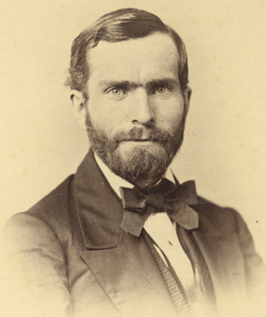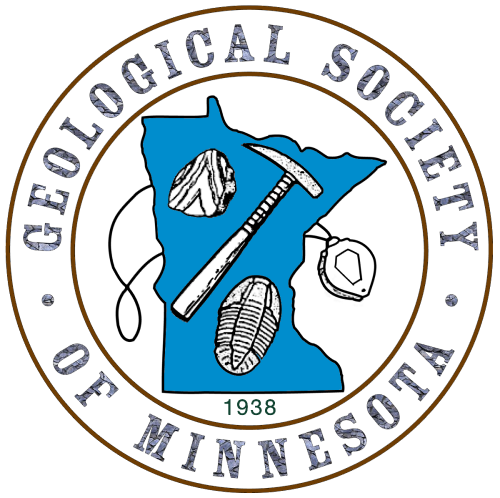Post Title : RAS Fossil Section Meeting & Talk with Dr. Robert Minckley on Henry Augustus Ward on November 8 at 6:30 PM CT
Content :
Hello, David & Kate;
The following meeting notice has been sent out to our members. Please pass this on to GSM members also.
Although this might at first glance look like a Rochester interest—Henry Ward was an international figure who did much to define how Natural History museums present material.
Michael Grenier
Rochester Academy of Science
————————————————————————————-
Dear Geological Society of Minnesota members;
The Rochester Academy of Science invites you to attend our Fossil Section Meeting on Tuesday, November 8, at 6:30 PM Central Standard Time.
This meeting will be on Zoom. The link is below. Pre-registration is not required.
If you have any questions, contact me at paleo@frontier.com.
yours truly,
Michael Grenier, President
Rochester Academy of Science
November Meeting
The November RAS Fossil section meeting is on Tuesday, November 8, at 7:30 PM ET (6:30 CT).
At this meeting we will celebrate one of the most influential naturalists of the 19th and early 20th centuries—Henry Augustus Ward–whose impact on shaping natural history museum collections and helping found many of today’s museums worldwide was immeasurable and whose legacy remains relevant today. Fossils were an important part of any museum collection, and Henry had a keen interest in these, as well as meteorites, rocks and minerals, and preserved biological specimens.
Our speaker is Dr. Robert Minckley, Professor of Instruction at the University of Rochester. His principal research interest is in the biology, evolution, conservation of bees, and you may have met him at our recent annual Scientific Papers Session. However, he is also Director of the Ward Project, which seeks to compile and disseminate information on remaining collections and correspondence/documents related to Henry Ward. “This project grew out of the realization that the third largest natural history museum in North America in the late-1800’s was at the University of Rochester and the museum was closely affiliated with Ward’s Natural Science Establishment, a supplier of natural history materials for colleges, universities and museums worldwide. Many relict specimens remain from the University of Rochester Natural History Museum in the Departments of Biology and Earth & Environmental Sciences, and the correspondence, records, and catalogs associated with the museum and Ward’s Natural Science Establishment are housed in the Department of Rare Books and Special Collections.” With that as the foundation, the Ward Project began and grew. Bob has his Ph.D. and Masters in Entomology from the University of Kansas, and his B.Sc. from the University of Arizona. He frequently returns to Arizona to study desert bees.
Dr. Robert Minckley, University of Rochester
Bob has entitled his talk, Rochester and the birth of Natural History Museums; Ward’s Natural Science Establishment before 1900.
He provides the following notes: “The spectacular surge of interest in natural history that occurred after the Civil War and through 1900 resulted in greatly increased public awareness about biodiversity and the establishment of many natural history museums. Rochester, New York played a central role in this revolution because of Ward’s Natural Science Establishment, a business dedicated to furnishing museums, schools, and collectors with specimens that filled cabinets arranged to illustrate the breadth of earth’s geological and biological evolution. The University of Rochester was involved in this museum-building movement early on; in the 1870’s the third largest natural history museum in the United States was on its downtown campus where the Memorial Art Gallery is today. This presentation will talk about materials from Ward’s Natural Science Establishment that are still housed at the University of Rochester and a project (wardproject.org) to make a virtual museum of Ward’s material from the UR and other museums worldwide.”
Henry Augustus Ward (1834 – 1906)
Henry Ward was born in Rochester, NY in 1834. He attended Williams College and studied at Harvard under the famous Louis Agassiz. In Paris, he studied at the Jardin des Plantes, the Sorbonne, and the School of Mines, and then at the universities of Munich and Freiberg. While there, he also traveled throughout Europe, the Middle East, and North Africa, building a collection, selling redundant material to finance the travel, and developing plans to provide exemplary specimens to museums back home.
Henry Augustus Ward (courtesy of The Ward Project)
In 1860, he returned to an appointment as professor of Natural History at the University of Rochester. In 1862. he founded Ward’s Natural Science, a business which collected specimens and castings from all parts of the world, and then mounted and sold them to colleges and museums. Though remaining on staff, he ceased teaching at the U of R in 1865 to pursue this full time.
He was an early member of the Rochester Academy of Science and was made a Fellow in 1889. His research publications included Notices of the Megatherium Cuvieri, The Giant Fossil Ground-Sloth of South America (1864).
He was a frequent contributor to the Proceedings of the Rochester Academy of Science where he largely published on meteorites— Preliminary Notice of a New Meteorite from Japan (1893), The St. Genevieve Meteorite (1901), Bacubirito; or. The Great Meteorite of Sinaloa, Mexico (1902), Description of Four Meteorites (Andover, Cuernavaca, Arispe, Bald Eagle) (1904) Williamette Meteorite (1904), Great Meteorite Collections and Their Composition (1904), Bath Furnace Aerolite (1905), and Three New Chilean Meteorites (1906).
Ward in 1906 with the Santa Rosa meteorite in front of the church in Santa Rosa de Viterbo, Boyacá, Columbia. (courtesy of ResearchGate)
His commercial publications included the extensive Catalogue of Casts of Fossils: From the principal Museums of Europe and America, with short Descriptions and Illustrations (1866) in which he offered castings to museums and educators from the thousands of molds he had made during his travels and visits to museums. He also had a huge stock of real specimens of all sorts.
At that time, most museums especially in the U.S. had small collections of local materials, and usually scrappy when anything other than “corals, crinoids, brachiopods and trilobites.” “But,” he wrote, “to accomplish the purposes of public instruction, a cabinet [collection] of fossils should be as complete as possible, covering the whole ground, and giving an unbroken view of ancient life.” His novel plaster castings, painted to match the originals in coloring, enabled museums everywhere to display near perfect replicas of famous fossils from all over the world, an approach still employed by museums today, in which nearly all dinosaur skeletons (and many other displays) are castings of fossils in storage elsewhere.
His enterprise, Ward’s Natural Science, remains in business today in Rochester, supplying museums, educators, and collectors with specimens, science kits, models, apparatus, chemicals, and more. https://www.wardsci.com/store/
You can see their fossil offerings starting on page 482 of their on-line catalogue, with mineral specimens in the same section.
Among many fascinating stories, my favorite is that when P.T. Barnum’s huge elephant Jumbo, purchased from the London Zoo in 1882, was killed when struck by a locomotive in 1885, he had Jumbo preserved by Ward’s taxidermy lab. The stuffed Jumbo was exhibited by Barnum’s traveling circus for two years, then donated to Tufts University, where it was destroyed in a fire in 1975. (See more on this at https://en.wikipedia.org/wiki/Jumbo.)
He was struck and killed by a car in 1906 in Buffalo, NY, at age 72—that city’s first automobile fatality.
Topic: RAS Fossil Section Meeting
Time: November 8th 7:30 PM Eastern Time, 6:30 PM CT
Join Zoom Meeting
https://us02web.zoom.us/j/84077589472?pwd=S1l5ZkZ4ZDFULzg3czNaVUFCRjBlUT09
Meeting ID: 840 7758 9472 Passcode: 413593
One tap mobile
+19292056099,,84077589472#,,,,*413593# US (New York)
(If difficulty, try +13017158592,,84077589472#,,,,*413593# US (Washington DC)
—————————————————————————————————————
Dial-up if you are on telephone only, or if you want to use your phone for the audio.
+1 929 205 6099 (New York) (If difficulty, try +1 312 626 6799 (Chicago) or
+1 301 715 8592 (Germantown)
Meeting ID: 840 7758 9472, Passcode: 413593


Created Date: November 3, 2022 at 7:36 PM
Update Date: November 3, 2022 at 7:36 PM
